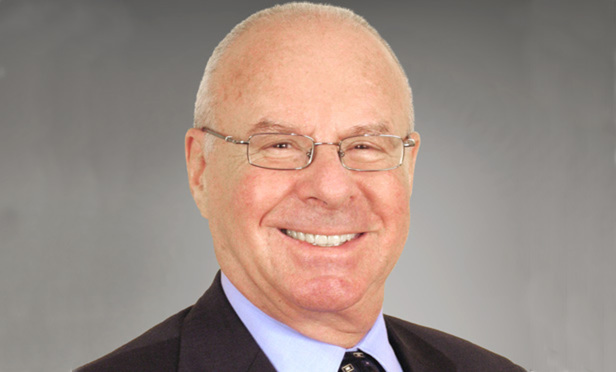SEC Proposes Changes to Accredited Investor Definition
In his Real Estate Securities column, Peter Fass discusses the SEC's proposed amendments to the definition of "accredited investor."
February 18, 2020 at 12:00 PM
6 minute read
 Peter M. Fass
Peter M. Fass
On Dec. 18, 2019, the SEC proposed amendments to the definition of "accredited investor" in Rule 501(a) of Regulation D under the Securities Act of 1933 (1933 Act). See Amending the "Accredited Investor" Definition, SEC Release 33-10734 (Dec. 18, 2019) (proposing release). The definition of "accredited investor" uses income and net worth thresholds to identify natural persons as accredited investors. The bright line standard also identifies entities with the financial sophistication and ability to bear the risk to participate in certain securities offerings including Regulation D based on their statutes alone.
Real Estate syndication offerings often rely on Rule 506 of Regulation D to exempt such offerings from registration under the 1933 Act. Rule 506 of Regulation D requires that, with certain limited exceptions, purchasers of the securities offered are limited to accredited investors. The amendments modify certain of the existing categories of accredited investors and create certain new categories, including new categories for persons with professional certifications, knowledgeable employees of private funds, and certain family offices and their family clients.
New Categories
The following new categories of qualifying natural persons and entities would be added to the accredited investor definition:
Natural persons with professional certifications, designations or other credentials. The amendments include individuals holding certain specified professional certifications, designations or other credentials in new Rule 501(a)(10). Natural persons holding the following professional licenses include: Series 7 (licensed general securities representative), Series 65 (licensed investment adviser representative) and Series 82 (licensed private securities offerings representative). The rationale is that individuals holding these certifications by virtue of passing the certification examinations have the required knowledge of the securities laws that allows them to make informed investment decisions without the need for additional protections under the securities laws.
Natural persons who are knowledgeable employees. The amendments add in new Rule 501(a)(12) "knowledgeable employees" of a private fund as a new category of natural persons qualifying as accredited investors in relation to that fund. The rationale is that by virtue of their active involvement in the activities of a fund, the employees are sufficiently sophisticated financially to be able to make informed investment decisions. Employees of a private fund who as part of their regular duties have participated in the fund's investment activities for at least 12 months fall within the amended definition. Note that knowledgeable employees of a private fund are deemed accredited investors only with respect to investments in that private fund.
The inclusion of knowledgeable employees in the definition of "accredited investor" allows these employees to invest in the private fund without the fund itself losing accredited investor status when the funds have assets of $5 million or less. Under Rule 501(a)(8), private funds with assets of $5 million or less may qualify as accredited investors if all of the fund's equity owners are accredited investors. Unless they qualify as accredited investors, these small private funds could otherwise be excluded from participating in some offerings under Rule 506 that are limited to accredited investors.
Amending the accredited investor definition in this manner would allow knowledgeable employees to invest in these small private funds as accredited investors, while permitting the funds to remain eligible to qualify as accredited investors under Rule 501(a)(8). This new category is similar to the existing category for directors, executive officers, or general partners of the issuer (or directors, executive officers, or general partners of a general partner of the issuer) in Rule 501(a)(4).
Registered investment advisers. Investment advisers registered under §203 of the Investment Advisers Act of 1940 and state registered investment advisers to Rule 501(a)(1) are added as accredited investors.
Limited liability companies. The amendments add limited liability companies to Rule 501(a)(3) as long as they meet the other requirements of the definition: (1) having total assets in excess of $5 million and (2) are not formed for the specific purpose of acquiring the securities being offered.
Entities that meet an investments-owned test. The amendments add a category in new Rule 501(a)(9) that covers entities that: (1) own investments in excess of $5 million; (2) are not formed for the specific purpose of acquiring the securities being offered; and (3) otherwise are not covered by other subsections of Rule 501(a). The new category includes entities such as Indian tribes and government bodies as well as other entity types that may be formed in the future.
Certain family offices and family clients. The amendments add family offices with at least $5 million in assets under management in new Rule 501(a)(12), provided that such family offices are not formed for the specific purpose of acquiring the securities being offered and that the purchase of the securities is directed by a person who has knowledge and experience in financial matters. The new Rule 501(a)(13) covers family clients (as defined in the Investment Advisers Act) of a family office meeting the requirements of new Rule 501(a)(12).
Spousal equivalents. The amendments revise Rules 501(a)(5) and 501(a)(6) to permit individuals to include joint income from spousal equivalents (not just joint income from a spouse, as is currently the case) when calculating the joint income thresholds. Under Rule 501(a)(6), an individual is considered an accredited investor if together with a spouse he/she exceeds the $300,000 joint income threshold. Under Rule 501(a)(5), the qualifying threshold for an individual is $1 million joint net worth.
Spousal equivalent is defined as "a cohabitant occupying a relationship generally equivalent to that of a spouse." Further, the Amendments clarify that for purposes of the calculation of joint net worth, net worth can be aggregated between the investor and his/her spouse (or spousal equivalent if the term is adopted) and that the securities purchased based on the joint net worth test may be purchased by the investor individually and do not need to be purchased jointly with the spouse (or the spousal equivalent).
Conclusion
The amendments do not propose any changes to the financial thresholds contained in the definition of accredited investor. The relevant thresholds under the definition are $5 million for total assets, $1 million for individual or joint net worth (excluding primary residence), and $200,000 for individual income or $300,000 for joint income. These thresholds have not been adjusted for inflation since 1982.
Peter M. Fass is a partner at Proskauer Rose.
This content has been archived. It is available through our partners, LexisNexis® and Bloomberg Law.
To view this content, please continue to their sites.
Not a Lexis Subscriber?
Subscribe Now
Not a Bloomberg Law Subscriber?
Subscribe Now
NOT FOR REPRINT
© 2025 ALM Global, LLC, All Rights Reserved. Request academic re-use from www.copyright.com. All other uses, submit a request to [email protected]. For more information visit Asset & Logo Licensing.
You Might Like
View All

'You Became a Corrupt Politician': Judge Gives Prison Time to Former Sen. Robert Menendez for Corruption Conviction
5 minute read
Federal Judge Pauses Trump Funding Freeze as Democratic AGs Plan Suit
4 minute readLaw Firms Mentioned
Trending Stories
- 1The Law Firm Disrupted: Scrutinizing the Elephant More Than the Mouse
- 2Inherent Diminished Value Damages Unavailable to 3rd-Party Claimants, Court Says
- 3Pa. Defense Firm Sued by Client Over Ex-Eagles Player's $43.5M Med Mal Win
- 4Losses Mount at Morris Manning, but Departing Ex-Chair Stays Bullish About His Old Firm's Future
- 5Zoom Faces Intellectual Property Suit Over AI-Based Augmented Video Conferencing
Who Got The Work
J. Brugh Lower of Gibbons has entered an appearance for industrial equipment supplier Devco Corporation in a pending trademark infringement lawsuit. The suit, accusing the defendant of selling knock-off Graco products, was filed Dec. 18 in New Jersey District Court by Rivkin Radler on behalf of Graco Inc. and Graco Minnesota. The case, assigned to U.S. District Judge Zahid N. Quraishi, is 3:24-cv-11294, Graco Inc. et al v. Devco Corporation.
Who Got The Work
Rebecca Maller-Stein and Kent A. Yalowitz of Arnold & Porter Kaye Scholer have entered their appearances for Hanaco Venture Capital and its executives, Lior Prosor and David Frankel, in a pending securities lawsuit. The action, filed on Dec. 24 in New York Southern District Court by Zell, Aron & Co. on behalf of Goldeneye Advisors, accuses the defendants of negligently and fraudulently managing the plaintiff's $1 million investment. The case, assigned to U.S. District Judge Vernon S. Broderick, is 1:24-cv-09918, Goldeneye Advisors, LLC v. Hanaco Venture Capital, Ltd. et al.
Who Got The Work
Attorneys from A&O Shearman has stepped in as defense counsel for Toronto-Dominion Bank and other defendants in a pending securities class action. The suit, filed Dec. 11 in New York Southern District Court by Bleichmar Fonti & Auld, accuses the defendants of concealing the bank's 'pervasive' deficiencies in regards to its compliance with the Bank Secrecy Act and the quality of its anti-money laundering controls. The case, assigned to U.S. District Judge Arun Subramanian, is 1:24-cv-09445, Gonzalez v. The Toronto-Dominion Bank et al.
Who Got The Work
Crown Castle International, a Pennsylvania company providing shared communications infrastructure, has turned to Luke D. Wolf of Gordon Rees Scully Mansukhani to fend off a pending breach-of-contract lawsuit. The court action, filed Nov. 25 in Michigan Eastern District Court by Hooper Hathaway PC on behalf of The Town Residences LLC, accuses Crown Castle of failing to transfer approximately $30,000 in utility payments from T-Mobile in breach of a roof-top lease and assignment agreement. The case, assigned to U.S. District Judge Susan K. Declercq, is 2:24-cv-13131, The Town Residences LLC v. T-Mobile US, Inc. et al.
Who Got The Work
Wilfred P. Coronato and Daniel M. Schwartz of McCarter & English have stepped in as defense counsel to Electrolux Home Products Inc. in a pending product liability lawsuit. The court action, filed Nov. 26 in New York Eastern District Court by Poulos Lopiccolo PC and Nagel Rice LLP on behalf of David Stern, alleges that the defendant's refrigerators’ drawers and shelving repeatedly break and fall apart within months after purchase. The case, assigned to U.S. District Judge Joan M. Azrack, is 2:24-cv-08204, Stern v. Electrolux Home Products, Inc.
Featured Firms
Law Offices of Gary Martin Hays & Associates, P.C.
(470) 294-1674
Law Offices of Mark E. Salomone
(857) 444-6468
Smith & Hassler
(713) 739-1250







